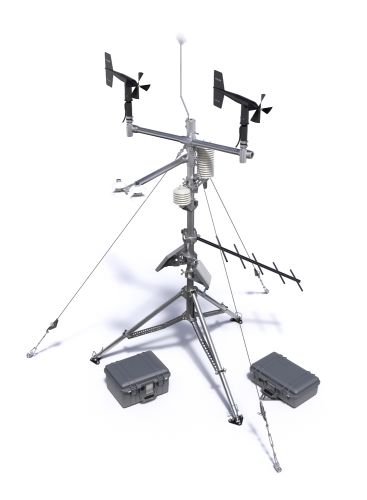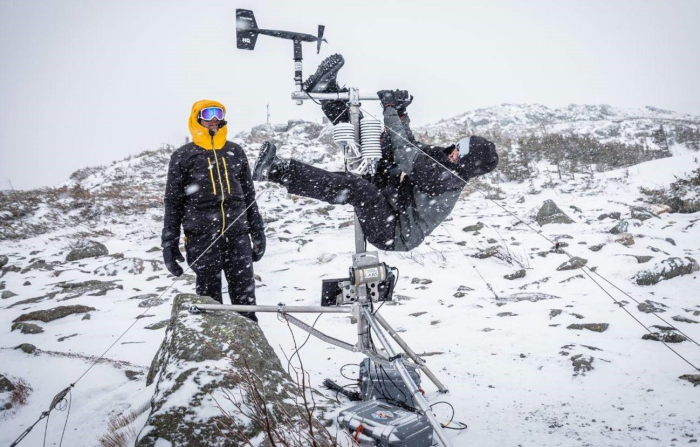In this Section
Custom Designed for Extreme Applications

Campbell Scientific has been designing and manufacturing automated weather stations for use in extreme environments since 1974. But a station designed for Mount Everest had special consideration that are unique to these extreme high-elevation environments:
- The entire system is designed for extremely fast deploy. With limited oxygen available, the installation team had to be able to have the entire system installed and fully operational as quickly as possible.
- Unique power considerations.
- Instead of using our standard lead-acid batteries, an AGM (Absorbent Glass Mat) lead-acid pack is used. These batteries work better in colder temperatures.
- Our standard weather stations are generally supported by a single battery: however, for the Mount Everest expedition, the battery was divided into smaller units, which allowed the substantial weight of the battery pack to be distributed to different climbers.
- Each station was programmed with different power consideration. These extreme automated weather stations go into a “sleep” mode to reduce the power needs when there are not enough solar resources to keep the batteries charged.
- Redundant solar panels were used to provide back-up in the event that a solar panel became damaged from ice and rock projectiles common during high-wind events.
- Advanced smart charge regulators with advanced diagnostic information related to the health of the power system were used. This information is transmitted with the environmental data.
- Redundant wind speed and direction sensors
- Redundant air temperature sensors
- The NR01 net radiometers are manufactured by Hukseflux. Each crystal dome was treated with a hydrophobic coating, and the sensors were characterized for the extreme low temperature.
- Barometric pressure sensors designed for extremely low-pressure environments
- Redundant communications devices: satellite, cellular, and spread-spectrum radio
- Extreme lightning protection
- Protective enclosures for instrumentation and batteries:
- Lightweight for transportation
- Extreme design for protection
- Insulation for batteries
- Anchor bolts
- Instrument tripod:
- Lightweight for easy transport by climbers
- Legs capable of 60° articulation for mounting on steep incline
- Large mil-spec IP68 connectors were used to enable installation with gloved hands
- Custom mounting brackets to withstand strong vibrations caused by high winds
- All brackets and connectors for mounting quickly without tools and with gloved hands
- Custom crossarms for extra rigidity
- Guy wires for extreme wind conditions
- Anchor bolts for legs, instrument enclosures, and guy wires
Field Tested

Testing the crossarm and tripod strength of an automated weather station at Mount Washington.
The test installation at Mount Washington provided us with valuable feedback on how we could improve the design of our equipment and installation efficiency for its final destination: Mount Everest. These are some of the improvements we made:
- Adjusted the solar panel brackets to a different style.
- Investigated methods to prevent the mounts from rotating about the mast.
- Included spares of some of the smaller hardware items in the event that they would be dropped or lost.
- Streamlined the cabling to protect it from wind.
- Added washers to the extendable anchor feet to remove space.

